Everton Women had a solid 2020/2021 WSL season, finishing as “best of the rest”, and are undoubtedly one of the more understated teams in the top flight. They play a simple footballing style under manager Willie Kirk, not displaying anything especially technical, just doing the basics well. This has helped them to become tough opponents for most teams, but the question now is whether they can close the gap to those above them. To do so, they need to add what was missing last season, which will potentially lead to them increasing their points tally.
In this scout report, we will look at one of their key additions this summer, France midfielder Kenza Dali, who joined on a free transfer from West Ham United Women. Dali has been one of West Ham’s most important players over the last two seasons, so there is genuine hope that she can increase Everton’s attacking quality.
Everton Women’s wing play
Before looking at Kenza Dali’s individual qualities, this we will first examine Everton’s tactics, picking out the key details of their attacking play, beginning with how they operate in the wide channels.
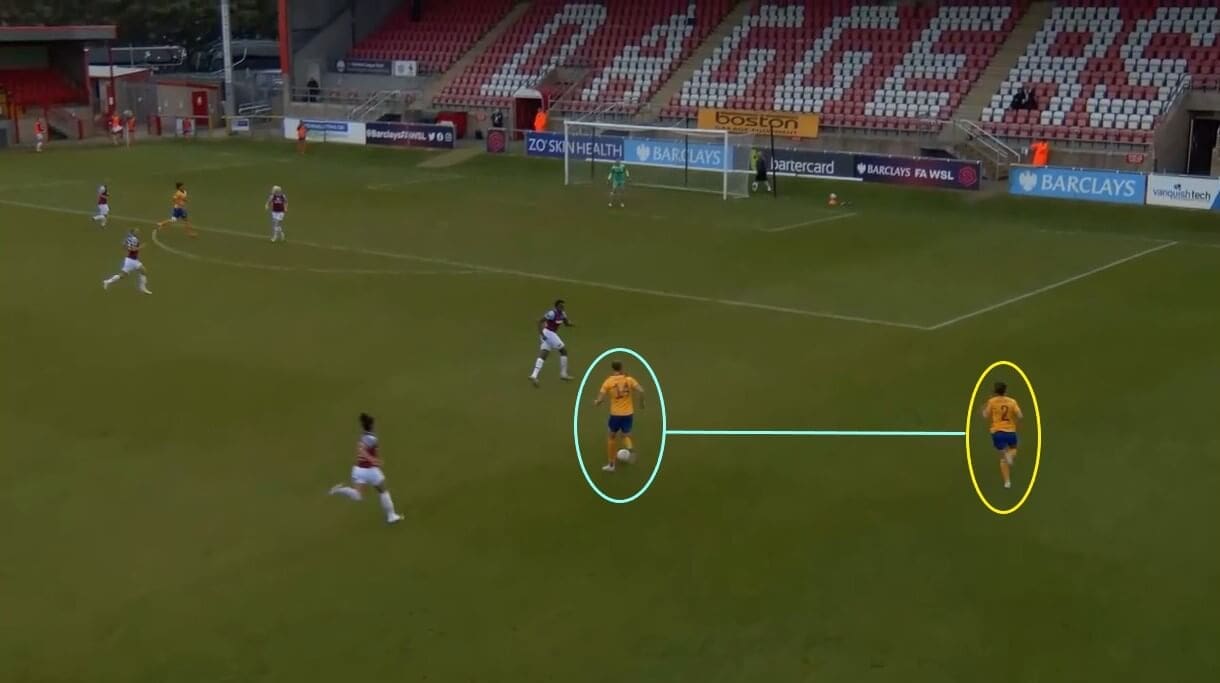
It is common to see the Everton full-backs advancing up the pitch to support their attacks, forming a partnership with the winger on the same side of the pitch as them. This was aided by Everton not changing their full-backs or wingers too often between games last season, with the right side generally consisting of now-retired Norway international Ingrid Moe Wold and Scotland’s Claire Emslie working together, whilst the left saw English left-back Poppy Pattinson and Australia winger Hayley Raso partnering each other.
By using this tactic, Everton created two-pronged attacks on the wings, making it harder for the opposing defenders in those areas to stop Everton breaking through. However, another key aspect of this is to enable the winger to drift inside the pitch, as Emslie is doing here, whilst the full-back controls the wing. This increases the width of Everton’s attack, forcing West Ham, on this occasion, to stretch out, which then leaves gaps open for the winger to target with their central run.
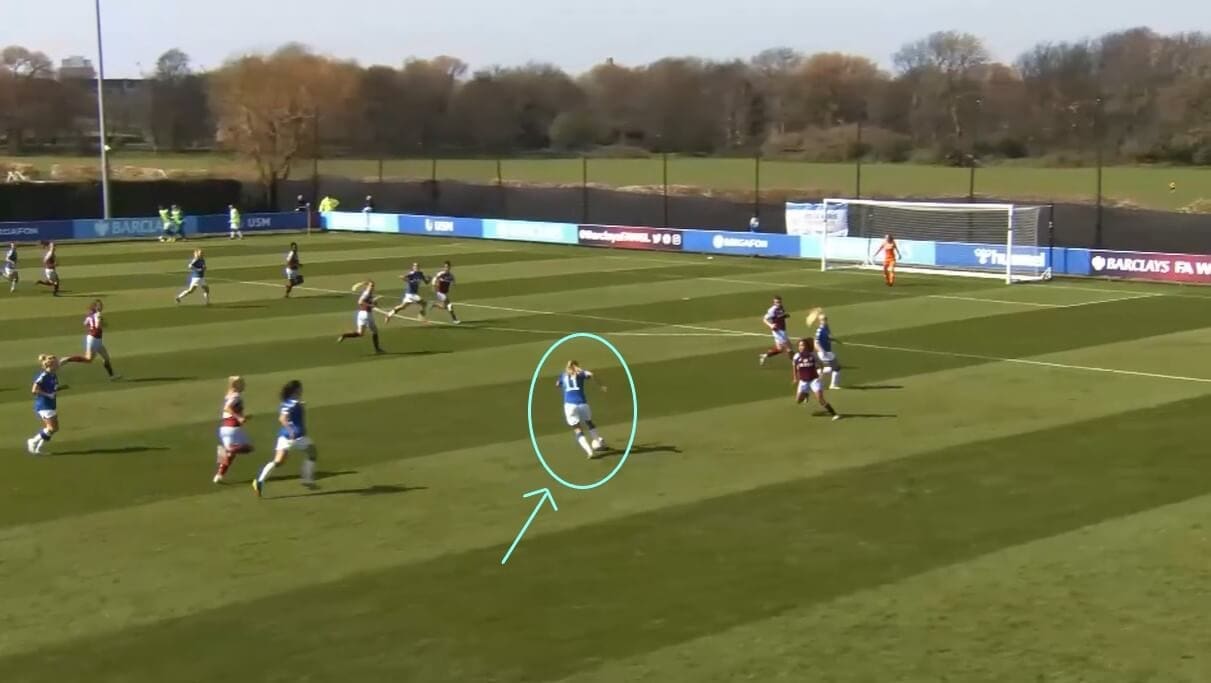
This image directly shows that threat, with the blue arrow illustrating former Hibernian Women winger Emslie’s inverted run into the open space. This has been helped by her teammate ahead of her moving towards the wing, taking the Aston Villa Women defenders with her, but this highlights how Everton’s attack is not built on complicated structural work, and instead focuses on clever movements and good anticipation from all of their players.
Therefore, anyone who comes into their team needs to have this spatial awareness, either to take defenders away and create passing options or to have the speed to cut inside and create goalscoring opportunities. It is a common sight to see Emslie and Raso shooting at goal from central areas, so a goal threat from wide is also necessary. Dali can do all of this, so will fit in well next season without needing to adapt or change her game in any way.
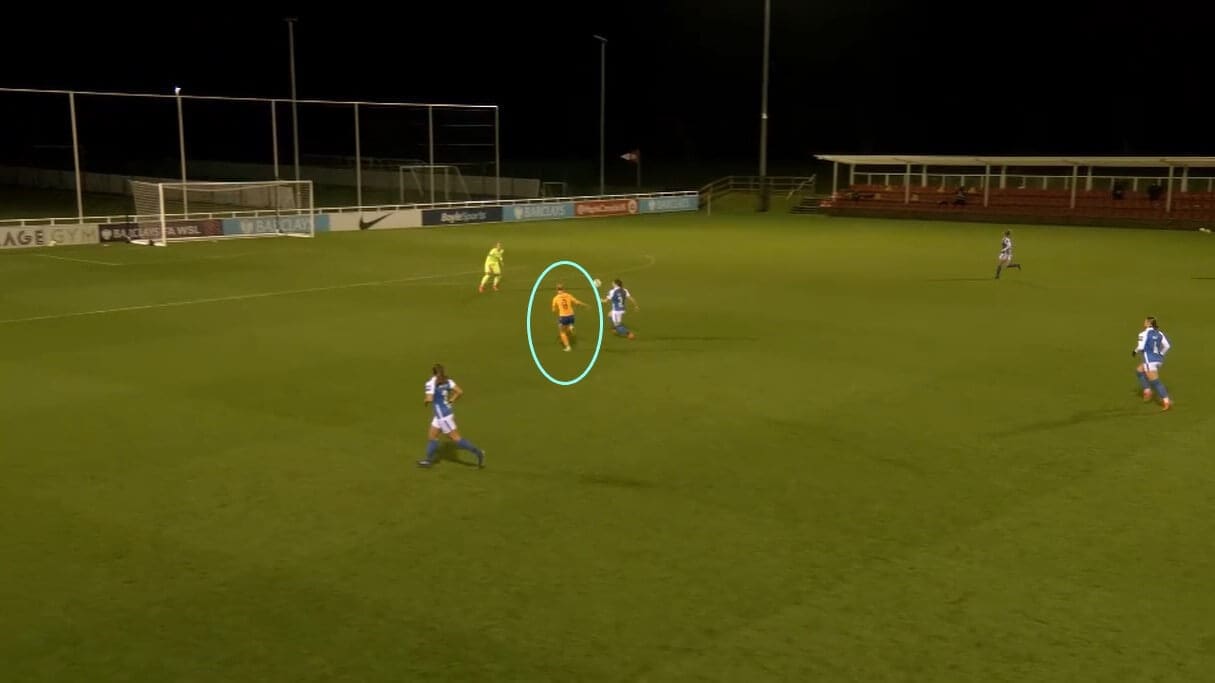
To build on the theme of Everton creating space for each other, this image shows Alisha Lehmann making a run behind Birmingham City Women’s defence. Switzerland forward Lehmann spent the second half of last season on loan at Everton from West Ham, and gave them a more direct attacking threat, using her pace to ask different questions of the opposing defenders.
Her run here was allowed by France striker Valerie Gauvin moving towards the centre circle, and this is the key here. Everton may have fixed starting roles, but their positioning during matches is flexible, with players able to get into different areas of the pitch and affect the game. Lehmann doesn’t manage to score here, but the subsequent mistake by Birmingham goalkeeper Hannah Hampton leads to Emslie scoring, so that again demonstrates the threat posed by their wingers, and the importance they have in Everton’s final third play.
Everton Women’s midfield importance
As well as the wingers, Everton’s midfielders play a crucial role in their attacking play and are encouraged to get into the final third as often as possible.
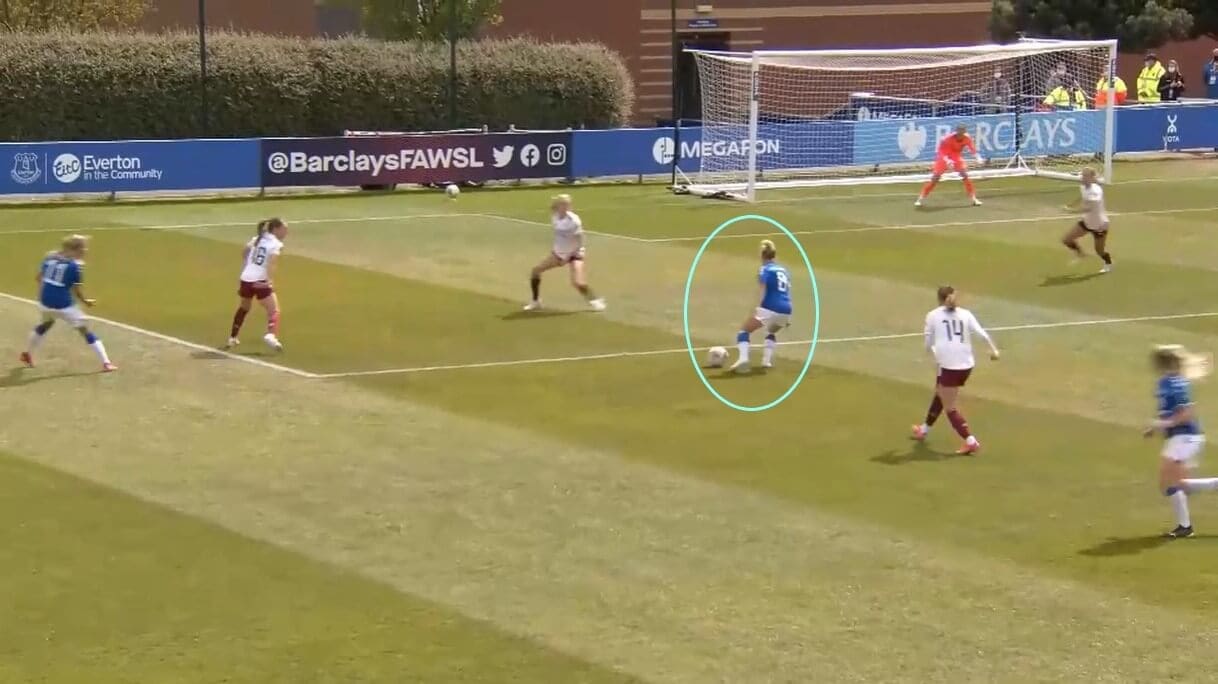
Here, Izzy Christiansen has found a pocket of space just outside the goal area, with Arsenal Women giving her too much space to control the ball, turn and shoot at goal. Everton’s tactics in these situations are to keep possession and shoot when an opportunity arises, and this relies on all of their players hunting for spaces and then utilising them when they do appear.
The reason for Everton’s midfielders offering such a big central threat is because their defence takes up a high position on the pitch, often playing around the centre line when the team are in possession. This forces Everton’s opponents to remain in their own half, limiting the space they have to operate in, as well as increasing Everton’s attacking threat, because the defensive-minded midfielders don’t have to track back to offer protection. As a result, they can all get into open spaces, supporting the attacks and creating options centrally.
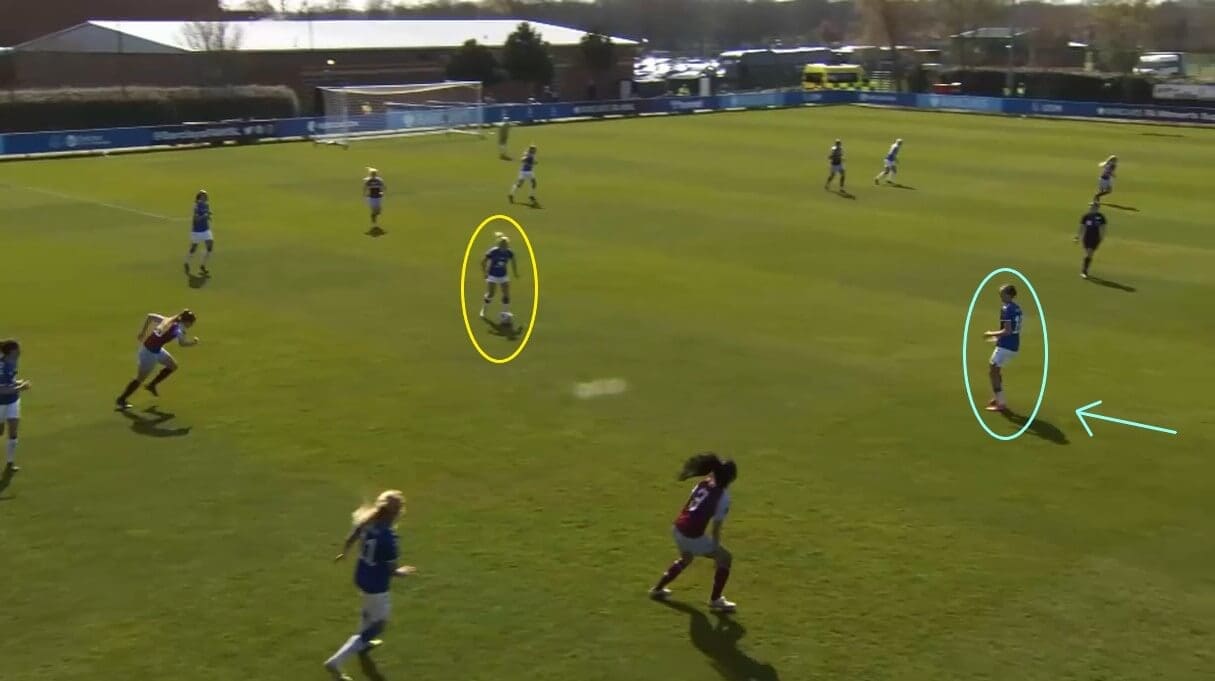
When Everton have possession in their own half, they generally play through the thirds whenever they can. The midfielders track back to offer shorter passing options, as can be seen in this image, allowing Everton to move the ball quickly and attack forwards with speed. The midfielders dropping back allows the full-backs and wingers to get up the pitch and provide second passing options, leading us back to the first part of this analysis. Everton’s midfielders need to know when to drop back, as well as having speed and confidence with the ball, and this is something Kenza Dali possesses plenty of.
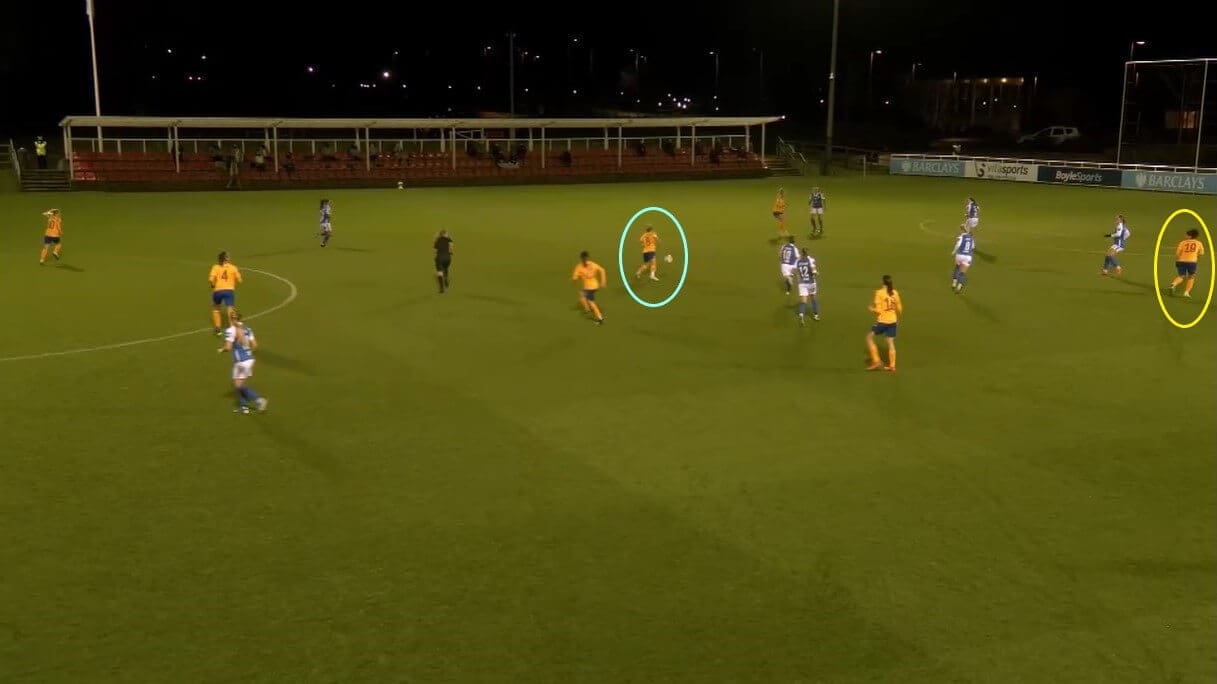
However, where Everton occasionally struggle is when teams set up against them with a strong defensive shape. Last season, Birmingham constantly tried to keep opponents out, and this has forced Everton here to play around them. With no pockets of space available, there are no runners going forward either, and we can see Gauvin, in the yellow circle, offering a passing option behind the Birmingham defence, but there is no way of reaching her.
We have seen how Everton get between defensive ranks when space is available, but they need a player who will make those runs when the opponents are set up to defend and space is at a premium. This is one quality Dali will give them, as well as an ability to regain possession quickly if it is lost in these situations, as the France international makes 62.2% of her ball recoveries in the opposing half. Therefore, if Everton did lose possession here, Dali would prove useful in winning it back.
Kenza Dali finding spaces
We have now outlined how Everton look to play in attack and will turn our focus to Kenza Dali’s game. As mentioned, she constantly looks to move into spaces around the pitch, trying to help her team maintain their attacking momentum and keep playing forwards when space is restricted.
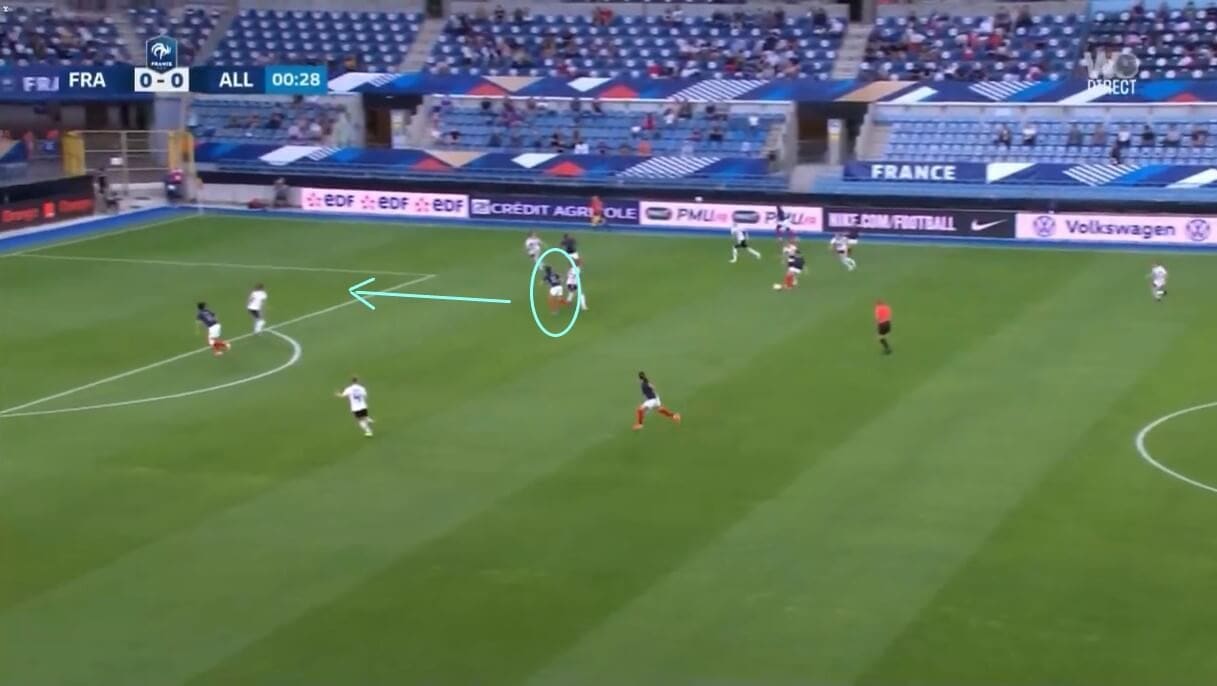
Here, France are in Germany’s half of the pitch, with the German players looking to surround the ball and force France to play backwards. Instead, Dali sees the gap ahead of her and makes the run, giving her teammate an option of passing forwards. This requires good anticipation and spatial awareness from Dali, both of which she demonstrates on a regular basis.
She also times her runs well, not going too early or too late, which would lead to her or her teammate being closed down. In the WSL, it is crucial to make attacking opportunities count, and Dali will give Everton a way of breaking through opposing defences, potentially allowing them to win games they drew last season.
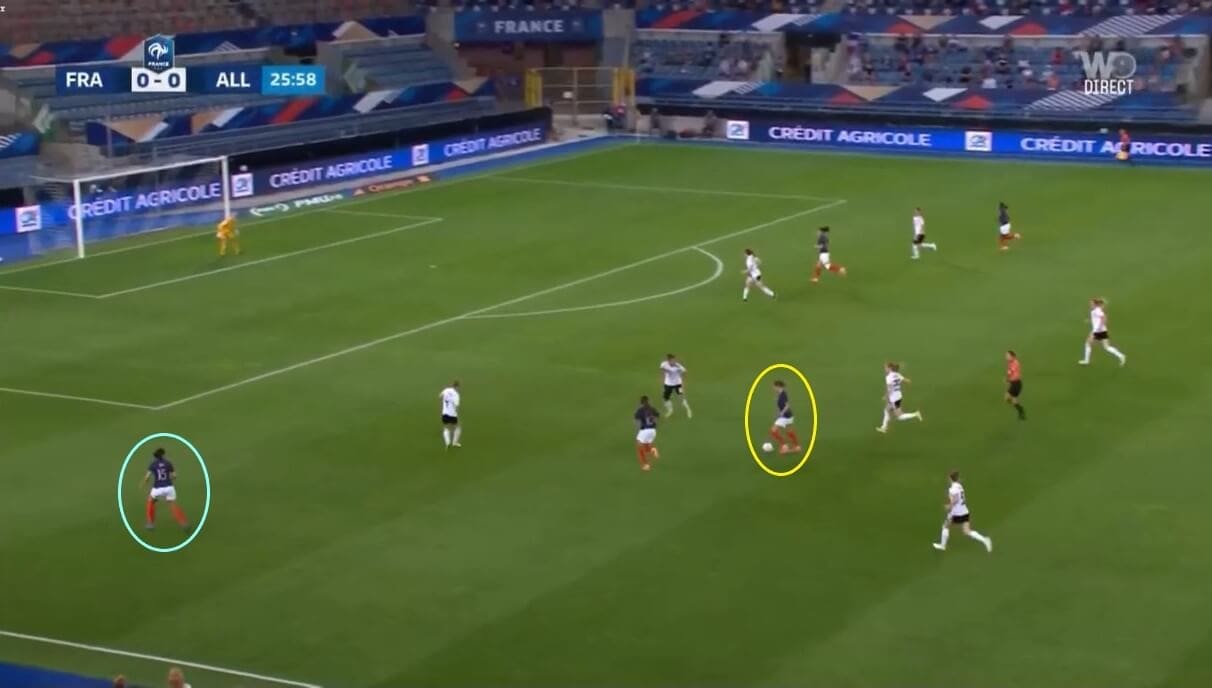
Dali is versatile too, able to play on either wing or through the middle. In the previous image, she was on the far side of the pitch, and now she is on the left. However, the principle remains the same whichever side she is on; she finds space and offers her teammates passing options. On this occasion, with Germany crowding the central spaces, Dali’s positioning enables France to play around them.
She is a reliable player to have in the wide channels, with a passing accuracy last season of 73.4% and a crossing accuracy of 34%, so she is able to get the ball into the box when needed, meaning she will fit into Everton’s tactics. Her low crossing accuracy is not down to her abilities, but her positioning last season, as she tended to play in the central channels more often than out wide.
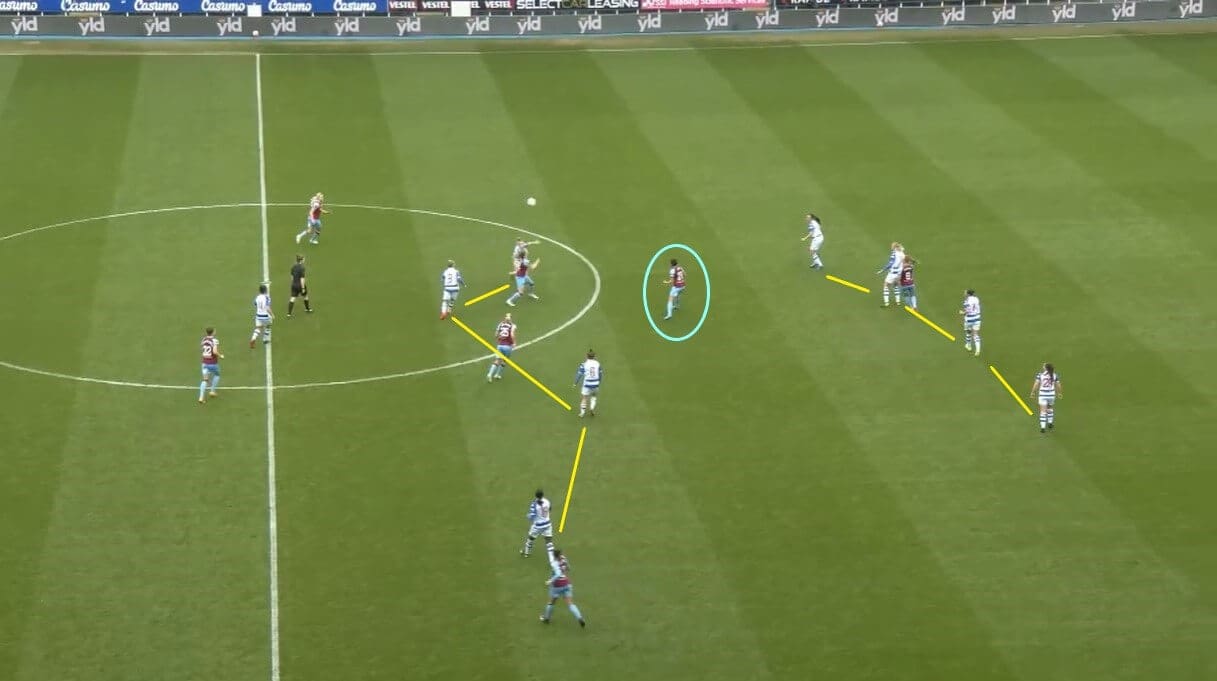
We mentioned when analysing Everton that they need a player who can get between opposing lines and link up the play, and this image shows Dali doing just that for West Ham. Reading Women have a narrow defensive line and a slightly wider midfield line here, but the space is open between them. As the blue circle shows, Dali has got herself into that hole and has time to receive the ball and transfer it into different areas of the pitch.
This was a crucial part of West Ham’s tactics last season, with Australia midfielder Emily van Egmond often working with Dali to support Scotland striker Martha Thomas in this. Dali managed to get three assists in the WSL last season, at an average of 0.14 per game, and these came because she positioned herself in these areas and moved the ball into teammates, creating plenty of goalscoring opportunities.
Therefore, the France international will slot seamlessly into Everton’s tactics next season, finding pockets of space and causing problems for opposing defenders. She will also play forwards, ensuring that there is an even greater service for Gauvin and Northern Ireland striker Simone Magill, as demonstrated by her 47.2% through pass accuracy and her 50.6% accuracy for passes to the final third. This is the crucial improvement she will bring to their attack.
Kenza Dali’s free role
Kenza Dali works best when not in a fixed role and instead needs to be allowed to roam around the pitch, getting in the right areas to affect the game. At West Ham, this was something they benefitted from, especially at the end of last season when they were fighting to stay in the WSL.
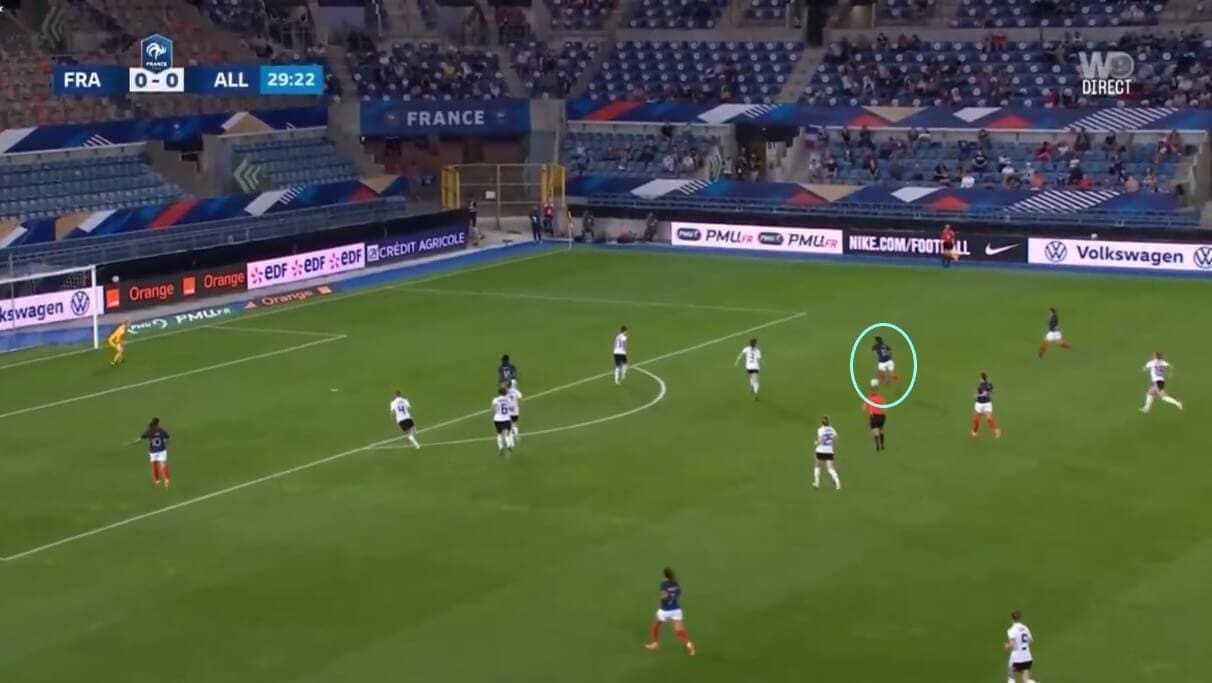
This image shows Dali with the ball just outside the box. However, instead of passing to a teammate, she shoots at the German goal, scoring brilliantly. This shows her confidence with the ball, and she is never afraid to have a go, even when it seems that she is too far away or has too many players around her. She scored four WSL goals last season, at an average rate of 0.18 per game, and they came from different areas of the pitch. She also got 47.8% of her shots on target last season, again highlighting her capabilities and the threat she poses from all areas of the pitch.
This confidence will hopefully spread to the other Everton players next season, allowing them to play with added quality, and that could be all they need to close the gap to Manchester United Women, who finished one place above them in fourth last season.
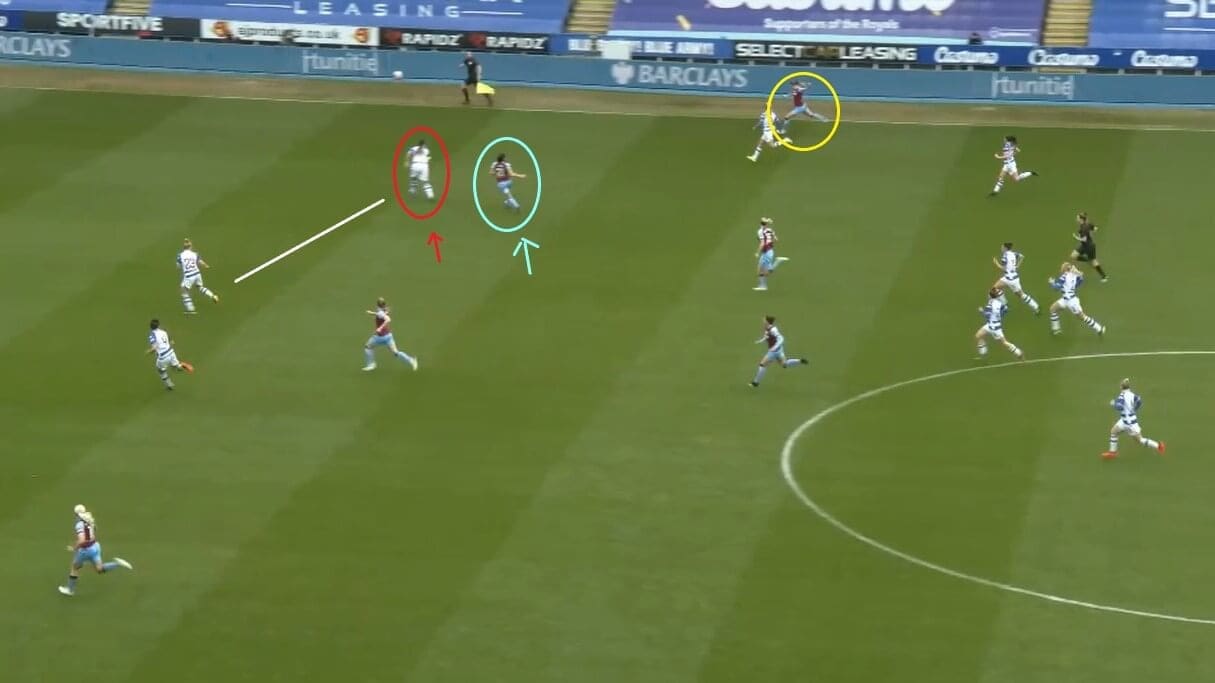
We have already seen how Dali makes runs to offer passing options for her teammates, but she also creates spaces for teammates to attack through too. Here, Dali notices that the ball is in a tight area on the far side wing, and so moves towards that area, dragging the Reading defender nearest her out of position, as the two arrows show.
This creates a gap in Reading’s defence, indicated by the white line, providing West Ham with a way through and into the space behind. Previously, this had not been possible, but Dali’s intelligent movement created the space, and this is something else Everton will benefit from next season. We have already seen how their forwards look to take defenders away from the ball, allowing the wingers to make inverted runs to shoot at goal, and so this is another way that Dali will fit into their tactics next season.
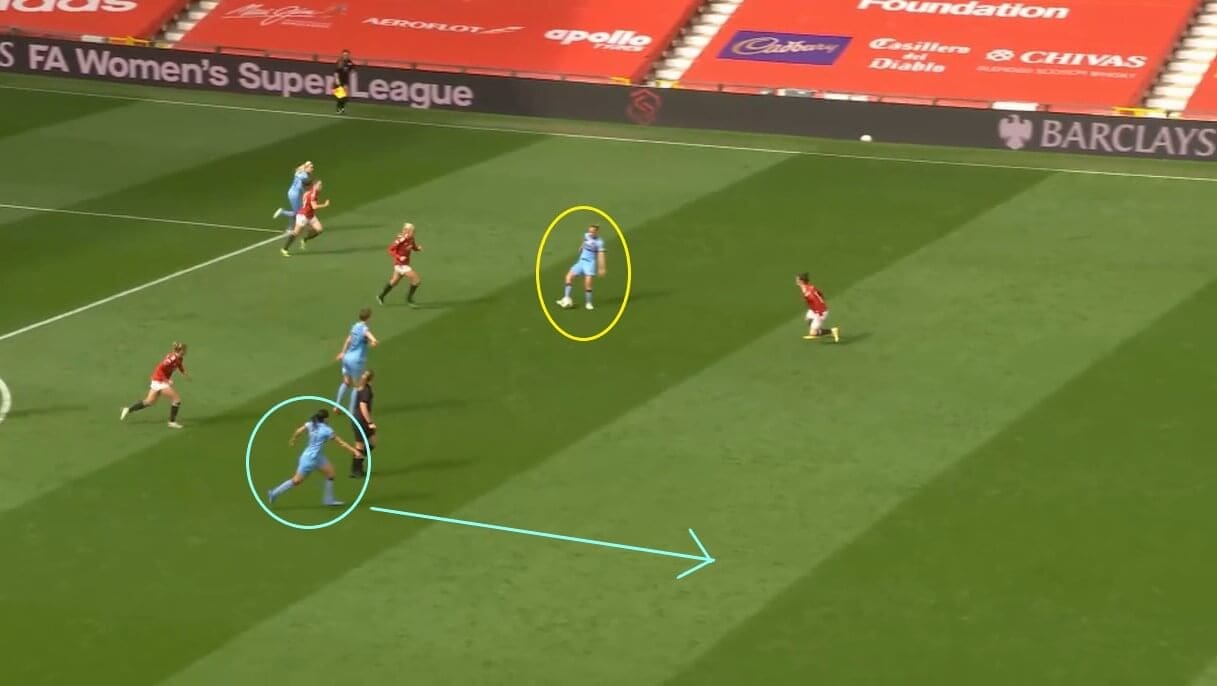
Here, West Ham have the ball in their own half, following a Manchester United set-piece. They are looking to break out and counter-attack as quickly as possible, and Dali is the one making the run forward to receive the ball first. We can see as well how she is pointing where she wants her teammate to pass the ball to, again demonstrating her confidence and awareness, knowing where she can create problems for opponents. This was really important for West Ham last season and will be just as important for Everton in the next one.
Conclusion
The question posed at the beginning of this tactical analysis was whether Kenza Dali could help Everton Women to bridge the gap to the top four. In order to properly address that question, we needed to first look at Everton’s attacking play last season, before then finding how Kenza Dali could fit into their lineup. One thing has been clear throughout; Dali’s style of play mostly matches Everton’s, so she will fit into their tactics without needing to change or adapt. Her versatility and ability to play in different positions will also help, and it will be interesting to see where Willie Kirk deploys her next season.
As well as Dali, Everton have re-signed England forward Toni Duggan from Atletico Madrid Femenino, as well as bringing in Sweden defender Natalie Bjorn and striker Anna Anvegard, and Germany’s former Arsenal Women right-back Leonie Maier. They have been linked with even more players as well, so are preparing for a top-four fight when the 2021/2022 campaign begins. With these players on board, it will be interesting to see how far they can go.

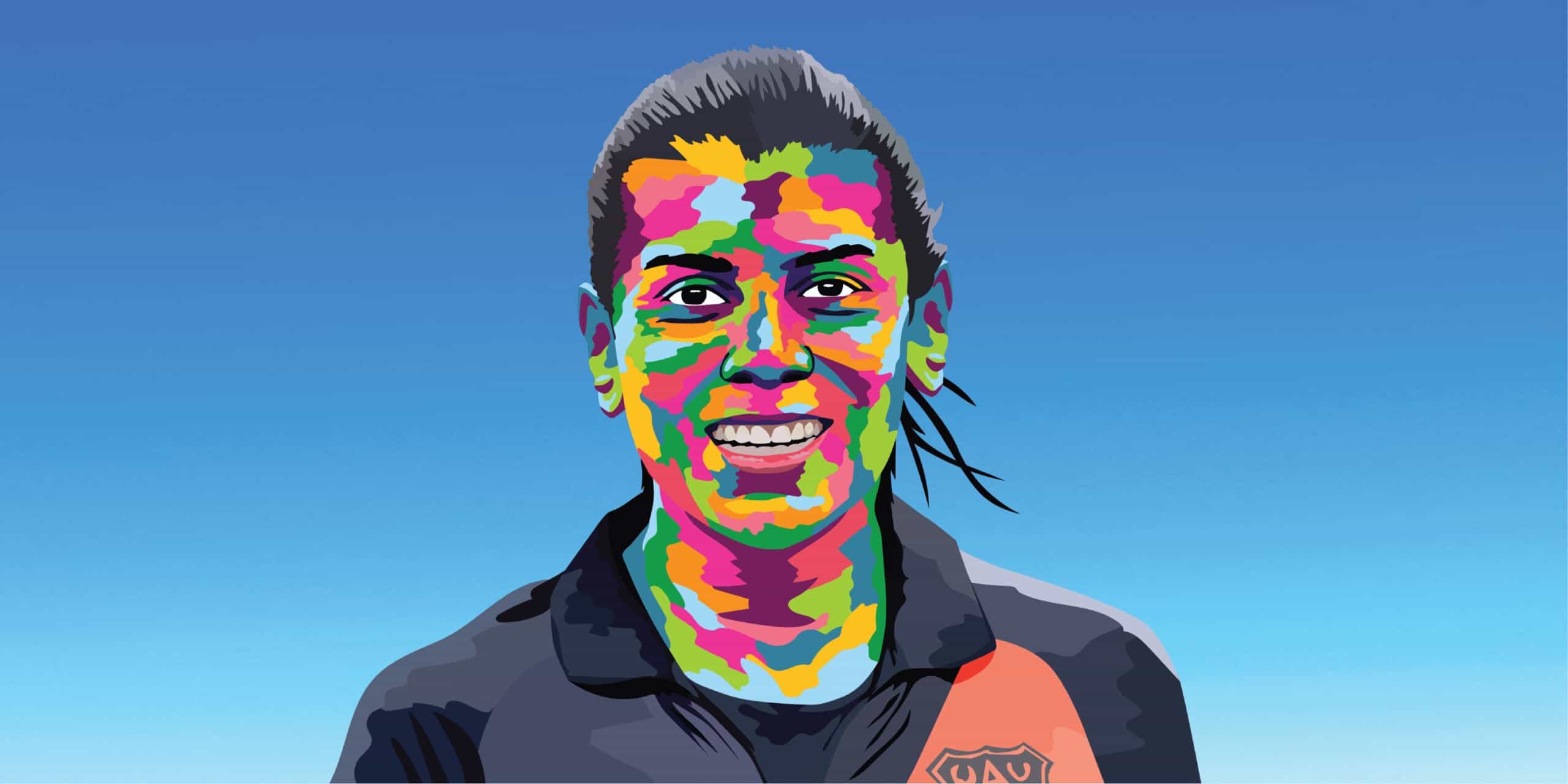


Comments